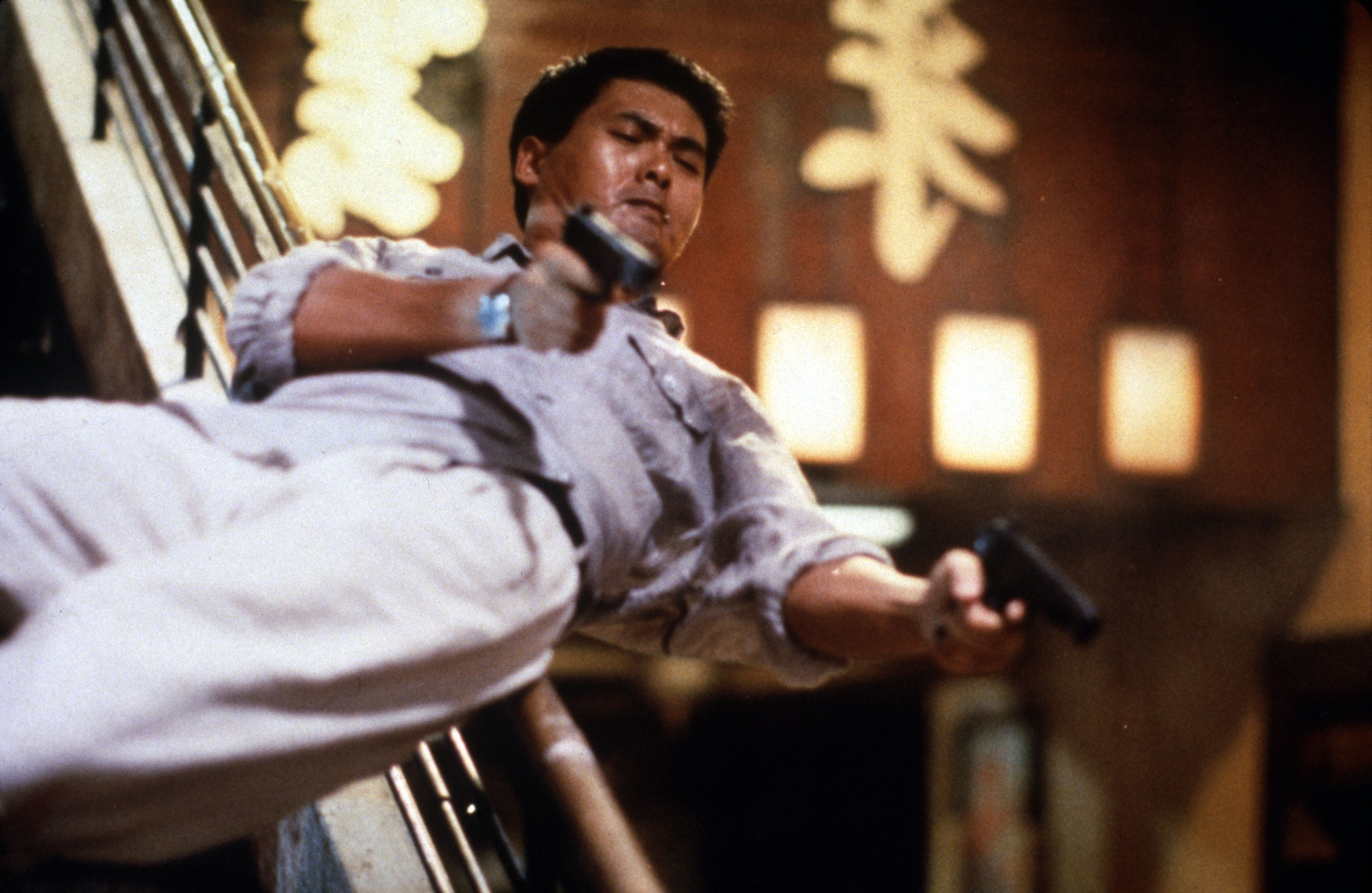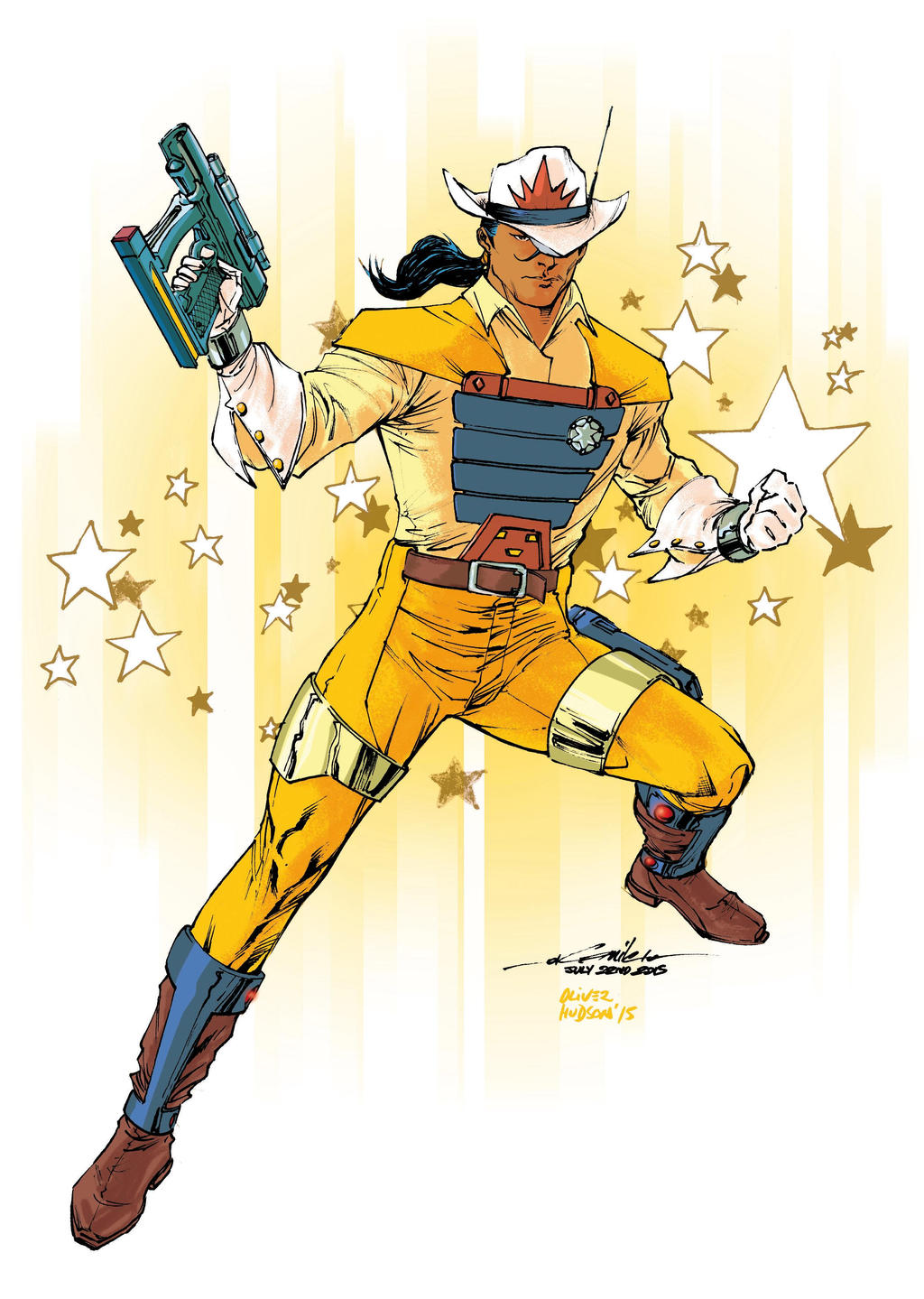I've seen a couple of posts that I'd like to at least link to, for your reading pleasure, and to discuss.
Cover Power-Ups
This is sort of a back-and-forth at this point, so I won't talk that much about these. Chaotic GM was inspired by my discussions of gun fu, and thus posted this, and now I'm inspired, because I really wanted at least one of my styles to have a focus on taking proper cover, and this power-up structure fits very much with how I need to write things up for my martial-arts-as-power-ups. I'd need to go over it all with a fine-tooth comb and the result would likely be too wordy for even one of my lengthy posts, but I just wanted to say "I intend to use this." As such, you might find it useful too.
Fixed-Effect Feints
This is actually a few posts, which Dell'Orto links to in his post, but I thought I'd just hit up
the other pertinent one real quick. It covers both fixed-effect deceptive attack and fixed-effect feints.
Fixed Effect Deceptive Attacks
I personally have less need for fixed-effect deceptive attacks. I understand the logic, which is that if it's a fixed effect, it reduces your flexibility. You're either making a deceptive attack or you're not, so you can't do things like perfectly tailor your attack to maximize your deceptive attack while maintaining your desired ability to hit. It also makes it easier to create trademark moves, to create techniques, and encourages people to start mixing and matching their attack options as they increase in skill. If Deceptive Attack is always -4 for -2 to defense, then what sets apart a skill 15 character from a skill 14 character is that they can make a deceptive attack and hit more than half the time; what sets a skill 18 character apart is that they can make a deceptive attack and also a rapid strike (with extra effort) and hit more than half the time. Or they can make a deceptive attack for the vitals and hit more than half the time, etc.
But for me, I tend to play at exceedingly high skill levels, as I run kung fu games where people expect to be able to pull off a wealth of complex moves. I have literally had readers and players complain if I hand them a character with less than skill-18 in their combat skill. When skill 20-24 is not out of the question, something as small as a -4 becomes uninteresting (though, do note that Dell'Orto suggests a second tier to help with this). More importantly, though, I find that the standard way of handling Deceptive Attacks makes it similar to a contest of skills that always improves in grades. A skill 22 character is always demonstrably better than a skill 20 because of that additional -1 they can layer onto their attacks if they want, and that strikes me as accurate: each additional increase in skill adds a subtle bit of nuance in this arms race of attack vs parry that gets abstracted away in the rules for deceptive attack. Fixed Effect makes this less granular.
That's not to say that I'm not interested. There are some interesting things it does with combat, namely that tendency to force players to think more about their options. But I'm not 100% sold on it.
Fixed Effect Feints
Fixed-Effect Feints, on the other hand, are a great idea. I've commented before on the problem with Feint and how unwieldy it can get. A lot of players dislike the Feint skill precisely for this: yes, you lose an attack, but every point you spend in it is a -1 to your opponent's defense; the only way to beat it is to raise your defenses (5/level) or to invest in Feint yourself, which makes it a must-have trait. It also allows a more skilled opponent to absolutely destroy less skilled opponents.
For example, Alexa is skill 20 with the force sword, and Barlo is skill 18. She has Parry 13, he has Parry 12. In a 3e fight, they would just hit one another until someone screws up their parry roll, which eventually means Alexa should prevail, but Barlo could get lucky. In 4e, Deceptive Attacks speed this process up: Alexia is applying a -8 to her attacks to apply a -4 to his defense (Reducing Barlo to Parry 8) and he's applying a -6 to his attacks to reduce apply a -3 to her defenses (reducing Alexa to Parry 10). This means that Alexa is likely to beat Barlo in a few turns (he can keep himself going with retreats, for example, and extra effort), rather than a 10-20 turns. If she feints first, she'll beat Barlo by an average of 2 points, and then she can make a Deceptive Attack to drop his effective Parry to 6. If Barlo feinted at Alexa, he would likely fail, and even if he succeeded, he's unlikely to apply more than -1 to her defense. So with a single feint and attack, Alexa will probably defeat Barlo in two turns, with only a 2 point difference in skill.
This gets far worse with a character who is mostly defenses. Say Cain has a neurolash Staff with skill 14, but it has +2 parry, and he has Enhanced Parry. He has an effective parry of 13, just like Alexa does. But he can't reduce her defense by more than -1 without risking failure half the time, so she's effectively at Parry 12, and she can reduce his by -4, dropping him to a (reasonable) 9 or less. But her Feints will likely beat him by 6, which drops him to a 3 or less on parry. The fool doesn't have any weapon skill, so she'll crush him like a bug, despite his impressive defenses.
If we go with a fixed effect feint, then it becomes a contest to see if you can get the -4. It's like stunning an opponent, but with skill rather than damage. In this version, Alexa can drop Barlo's defense more on average, making the move more valuable to her than under the normal rules, but Barlo has a chance of dropping Alexa. If he gets lucky, he might beat her by a single point, which instantly translates into a -4 to her defense. Thus, he sees value in trying to do something other than frantically defend all the time, and there's a real chance he could beat her. Cain likewise caps how much she can beat him. Sure, she's still likely to win the feint contest, and she'll apply that full -4 to his defense, but that's not as bad as -6, and it only drops his defense down to 5 or less, which is a survivable value (it requires extra effort, retreats, all-out defense, etc, but Alexa is giving up a turn to make the feint, so the fact that you could survive it means she's more wearing you down with it than guaranteeing her victory).
This does something else: it prevents the Feint technique from being an effective bonus to defense. When you get to the point where Feinting becomes so powerful, then players become highly incentivized to take it, not just to defeat their opponents with it, but to prefer their opponents from using it against them.
Say Cain purchased Feint as a technique and then bought Technique Mastery. He has Feint-20 and Staff-14. If Alexa tries to Feint him, she's unlikely, under the standard system, to apply more than a -1 or -2 to his defenses. By purchasing feint and technique mastery (RAW that's 8 points, which would only raise his Staff skill to 16 and only give him a +1 to defense), he's effectively increased his defense rating against her by ~+4. Thus, she cannot reduce his defense to more than about 7 or 8, which is much better than the 3 she was dropping it to before. He has little incentive to use it against her, for the same reason Barlo has little reason: he's unlikely to get more than -1 or -2, which will not be enough to regularly land a hit on her. But if we use the fixed effect version, his high level of Feint still acts to protect him, but it becomes all-or-nothing: if she feints, he's trying to prevent the feint from working. If he succeeds, she gets nothing, but if he fails she drops his parry to 5 again. At the same time, he has incentive to feint against her, because a successful feint will drop her parry to 8 if he pairs it with his deceptive attack, which would legitimately force her on the defensive. And he can succeed at that 50% of the time.
The counter argument I hear is that this makes Feint less effective. First, that's rather the point, as it's one of the more powerful techniques, more powerful than it really should be. Second, as you can see with poor Cain there, it actually creates more value for it. I've discussed "capping" feints, but someone points out that greatly reduces the utility of maximizing your feint. I think this fixes that problem: being a feint expert now becomes about maximizing your chances at getting that -4 (as well as preventing others from getting that -4 on you) than it is about maximizing what penalty you can apply to your opponent. Yes, it's less useful against unskilled opponents, but you don't need much help against those. It becomes more useful against skilled opponents, which makes it more interesting.
I'm less sold on the idea of a higher tier of a fixed feint, though. Setting aside my total embrace of uncapped deceptive attacks, I think a penalty to defense of more than -4 really needs some justifications. Being prone is a -3, being stunned is -4, being unable to see your opponent is -4, but somehow, a feint can be -8? How bad are your defenses that you're as bad off as if you were blind and stunned? What did he do? It also, again, allows you to crush unskilled defenders even worse than before, but we already have deceptive attack for that. That said, you might need something like that to deal with extreme opponents, but you're unlikely to succeed by 10+ against a similarly skilled opponent; this is only really useful against people with ridiculous defense values that don't have comparably high skill levels to match. So I'd have to think on it. This might be better handled as a sort of perk or special technique that allows you to take a greater risk, or caps how low you can bring the target's defenses (it can apply a full -8, but not if your opponent is already "underwater" and so can't drop your opponent's defenses below, say, 10).
So I like this. I might introduce it, but given how passionate my readers are about martial arts in Psi-Wars, I'll doubtless hear quite some debate back and forth on the merits of it before I do it, hence this post. I also wanted to highlight what I think is a great idea.
















